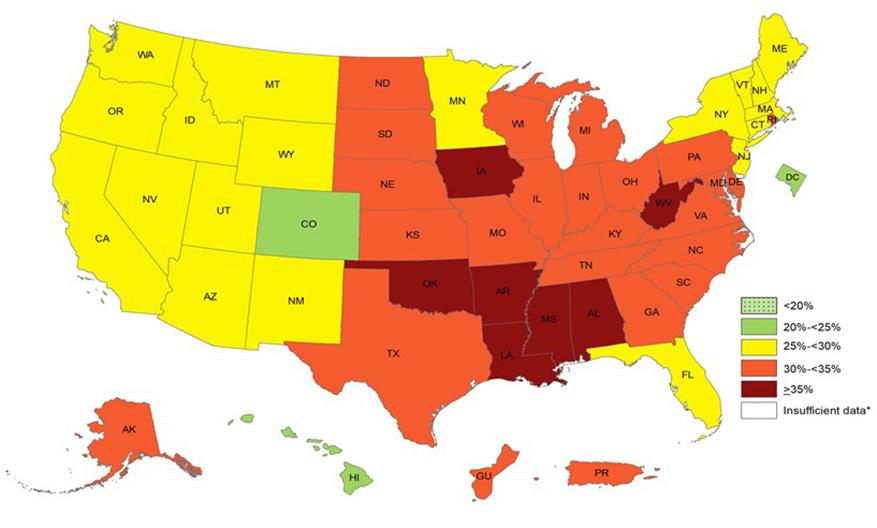
Americans are fatter than ever.
Obesity rates for 2017 released Wednesday by the Centers for Disease Control and Prevention show that all but two states have obesity rates between 25 percent and 29 percent. That includes Oregon and Washington.
The situation is even worse in the middle of the country and across a wide swath of the East Coast, with rates ranging from 30 percent to at least 35 percent. A total of 17 states had obesity rates above 35 percent in 2017, compared with five in 2016 and none in 2012.
Colorado had the lowest obesity rate at 23 percent and West Virginia had the highest -- 38 percent.
These data were collected by the Behavioral Risk Factor Surveillance System, an ongoing telephone survey conducted by the CDC and state health departments. The height and weight data, which are used to determine obesity, are self-reported. Obesity is determined by the National Institutes of Health as anyone with a body mass index of at least 30. That's about 30 pounds overweight. The body mass index is determined by a person's weight in kilograms divided by their height in meters squared. Check the National Institutes of Health website to calculate your body mass index.
Obesity is a risk factor for serious health conditions, including diabetes, heart disease, stroke, high blood pressure, some cancers, osteoarthritis, gallbladder disease and gallstones and gout.
African Americans reported high rates of obesity across much of the country. Most states had a rate of at least 35 percent. African Americans in Oregon and Washington reported rates between 30 percent and 34 percent. Other states had lower rates but only one -- North Dakota -- had an obesity rate among African Americans under 20 percent.
Obesity is also a problem among Hispanics. No state fell under 20 percent, with Oregon, Washington, Idaho and California rates at 30 percent to 34 percent.
Education matters when it comes to obesity, the data show. Adults without a high school diploma had the highest prevalence of obesity -- 36 percent -- followed by high school graduates -- 33 percent -- and adults with some college education 32 percent. People with college degrees had the lowest rate at 23 percent.
The CDC said that policymakers, providers and individuals can prevent and manage obesity through the promotion or adoption of healthy eating, better sleep, stress management and physical activity.